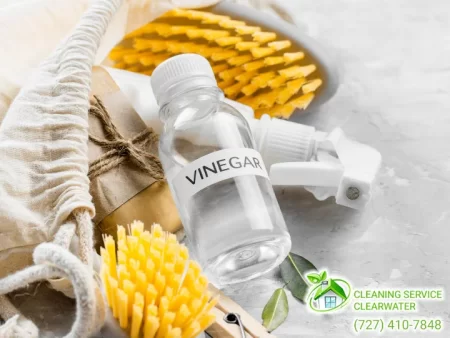 Molds are not bad in all forms. They provide us with penicillin, antibiotics, mushrooms, and various cheese types. However, the mold that grows in your house isn’t good for you. Some are so bad that they can trigger respiratory issues such as allergies, asthma, or several other serious illnesses. Molds grow in dark, damp, and warm areas. These places are usually near dishwashers, showers, washing machines.
Molds are not bad in all forms. They provide us with penicillin, antibiotics, mushrooms, and various cheese types. However, the mold that grows in your house isn’t good for you. Some are so bad that they can trigger respiratory issues such as allergies, asthma, or several other serious illnesses. Molds grow in dark, damp, and warm areas. These places are usually near dishwashers, showers, washing machines.
Professional restoration companies handle mold infestation using highly effective tools and cleaning solutions. One such chemical that you can use for cleaning mold is white vinegar. Available in almost every household, it kills more than 80% of mold species which includes the dangerous black mold. They are known to be far better than bleach that mostly kills surface mold and may sometimes make matters worse.
How to Use Distilled Vinegar to Treat Mold?
White vinegar usually contains 5% acidity and is highly effective when used undiluted. Hence, you shouldn’t be concerned about mixing it with water. But you should avoid using it on waxed wood, natural stone, cast iron, or aluminum as it’s a mild acid.
Before starting the cleaning process using white vinegar you should keep the following supplies ready:
- Empty spray bottle
- White vinegar
- Baking soda
- Gloves, Mask, and Goggles
- Scrub brush or scouring pad
First Step: Adequate Protection
You need to avoid any direct contact with mold as it can be dangerous. It can be fatal if any spores become airborne while you clean. Also, vinegar is acidic and it might become irritating for your skin. Hence, to be safe, you need to wear non-porous gloves, safety glasses, and a mask covering your nose and mouth.
Second Step: Apply Vinegar
Pour undiluted white vinegar in an empty spray bottle for covering the mold growth area. Spray it directly over the mold to saturate it using vinegar and allow it to sit for at least an hour. Avoid scrubbing or rinsing too quickly as cleaning mold takes time to completely absorb the vinegar.
Third Step: Prepare a Baking Soda Scrub
After one hour, use a baking soda solution for scrubbing away the remaining stains and molds. Add some baking soda and two cups of water to an empty spray bottle. Shake the mix vigorously till it combines and mixes.
Fourth Step: Scrub The Remaining Mold
Spray the solution directly over the mold and stains you see. Scrub it using a scrub brush or a scrubbing pad. Acting as an abrasive agent, baking soda helps in dislodging consistent mold and removing stains. Once scrubbing is done, rinse the region using clean warm water. Ensure you wear the protective gear while carrying this step to prevent any exposure to it.
Fifth Step: Finishing with Final Spray
In the final step after the scrubbing process is complete, you need to rinse the area clean. Spray vinegar one last time again. Let the area become dry. Doing this again eradicates any lingering molds and prevents them from growing again. You shouldn’t be worried about any strong vinegar odor as it fades on its own after a few hours.
Prevent Growth of Mold Using Vinegar
It doesn’t mean you need to wait for it to grow. You can prevent it from growing using vinegar too. Mix vinegar with your cleaning routine and apply it around damp areas that are prone to mold. You can also spray a bottle of vinegar in your bathroom and mist it around the shower stall after each shower. You can also add vinegar to the mopping solution for preventing mold growth on the floor.
In case you are searching for a professional cleaning service for your house or mold growing inside, contact Cleaning Service Clearwater. They are an experienced team of professionals who have been serving residents of Clearwater, FL for several years.
Picture Credit: Freepik
